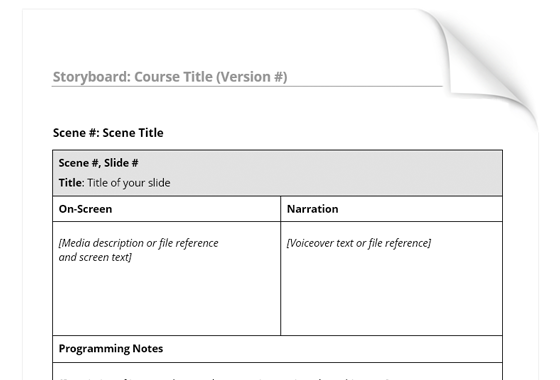

I ask everybody to draw UI in the three frames of their storyboard showing a progression: first this, then that, then that. Chances are, you’re itching to illustrate at least one of them in more detail. Look back at your mind map and your Crazy Eights and find the best ideas. It’s kind of like a comic book that you’re going to fill in. Each sticky note is one frame in the storyboard. Start with a blank sheet of paper, and put three sticky notes on it. The goal is to take the ideas we’ve generated so far and sketch an actual UI showing how a user would move through this part of the story– where they click, what info they enter, what they think, etc. Now we’re going to make that user story diagram more concrete, and we’re going to make something that will be shared anonymously and critiqued by the group. You’re scraping the bottom of the barrel, which makes it more painful to come up with new ideas, but often this is where the most interesting solutions come from. On the second round, everyone will have the hang of it. If you get stuck, try repeating an earlier sketch with a small variation– this type of exploration is useful and it keeps you moving.įor best results, do two rounds of Crazy Eights. Crazy Eights will also help loosen up your creative muscles and make you more productive in subsequent sketching exercises. Since you have only 40 seconds for each drawing, you’ll need to turn off the self-editing and just get your ideas on paper. And since these aren’t shared with the group, there’s no need to worry about making them pretty. Yes, you did the math correctly, that’s about 40 seconds per sketch, which is crazy…but it’s a great way to crank out variations of ideas quickly. Then you have five minutes total to draw eight sketches, one in each panel. The exercises outlined below force you to get ideas out of your head and onto paper, without getting stuck feeling like they have to be finished or perfect.Įverybody folds a blank sheet of paper in half four times, then unfolds it, so they get eight panels. Instead, everyone in the sprint will be working quietly and individually, often around the same table. Remember in the Legend of Zelda how the map would light up rooms you had visited as you explored the dungeon? That’s what you’re doing on Day 2: illuminating all of the possible paths.Īlthough you’re going to be generating ideas, don’t think of this as brainstorming–at least not the everybody-is-shouting kind of brainstorming. I call this step “diverge” because when everyone (from the CEO to the marketing manager) is cranking out quick sketches, we tend to get a lot of ideas–and different kinds of ideas. Expect this step to take between two hours and all day. It’s time to start cranking out solutions. In the first two days of the sprint, we’ve learned about the problem, shared a lot of knowledge, and chosen the challenge we want to tackle in this sprint. Enjoy.Īt the Google Ventures Design Studio, we have a five-day process for taking a product or feature from design through prototyping and testing.

Happy (almost) New Year! We’re saying good-bye to 2013 by revisiting some of our favorite stories of the year.


 0 kommentar(er)
0 kommentar(er)
